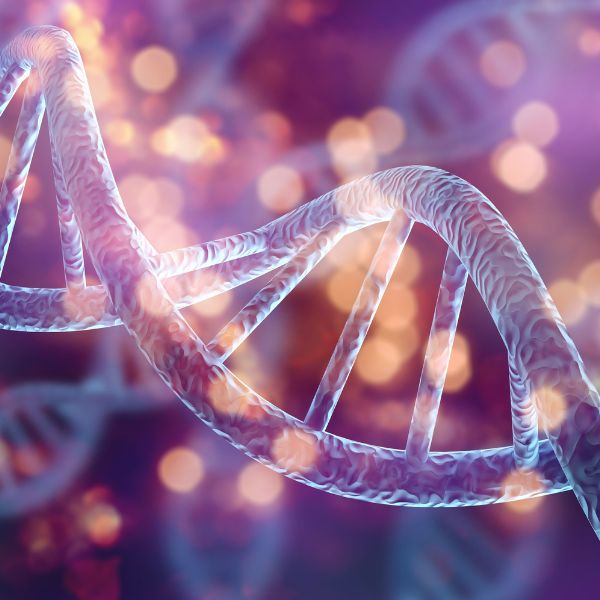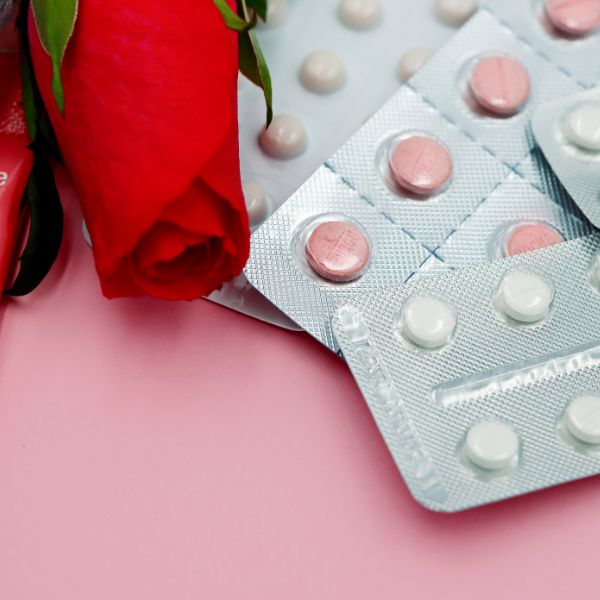Premenstrual Dysphoric Disorder (PMDD)
What is Premenstrual Dysphoric Disorder?
Premenstrual Dysphoric Disorder (PMDD) is a severe form of premenstrual syndrome (PMS) that affects approximately 3-8% of individuals assigned female at birth who are of reproductive age.
PMS symptoms include manageable anxiety, depressive feelings or low mood changes (definitely still no fun and really disruptive), however PMDD significantly disrupts daily life due to its intense emotional and physical symptoms. These symptoms typically appear in the luteal phase of your menstrual cycle (the week or two before menstruation begins) and fade after the period starts.
Symptoms of PMDD can range from emotional challenges like severe irritability, depression (feeling sad), and anxiety to physical issues such as fatigue, breast tenderness, and joint or muscle pain. Many individuals with PMDD report difficulty concentrating, feeling out of control, or experiencing drastic mood swings that strain personal relationships and work-life balance. In extreme cases, PMDD has been linked to suicidal thoughts, highlighting the importance of seeking help if symptoms become overwhelming.
The impact of PMDD on daily life can be profound. According to a study published in The American Journal of Psychiatry, individuals with PMDD often experience reduced quality of life comparable to those with chronic conditions such as major depressive disorder. The cyclical nature of PMDD means that individuals may feel fine for part of the month but endure debilitating symptoms during the luteal phase, making it challenging to plan ahead or maintain stability in their routines.
Testimonial - JD 39, has struggled for many years but is now on a treatment plan -
"PMDD is a rage monster that comes every month to disrupt my entire life. It makes me feel worthless, that I am not good enough mother, wife, friend. It makes me question every little detail, conversation or interaction however big or small I have in the day.
At its worse, it makes me think that everyone would be better off without me, to the point where very dark thoughts occupy my mind. Along with an inner dialogue that argues with itself. It prevents me from sleeping, or makes me so tired I don't know what day it is. It also makes me RAGE at people, more than just getting angry. It is as if I am out of my body, knowing what I am saying is completely ridiculous and unnecessary, but I am helpless to stop it.
It ruins relationships and very nearly ruined and ended my life."

Scientific research continues to explore the complexities of PMDD. A study published in Biological Psychiatry found that individuals with PMDD are more sensitive to hormonal changes, particularly fluctuations in oestrogen and progesterone.
If you are worried about the build up to your period and feel it is becoming hard to manage read on for steps to take and how treatment may go. Your first step is to make an appointment with your GP and ask for a referral.
What Causes PMDD?
The exact cause of PMDD is not fully understood, but research suggests it results from an abnormal response to normal hormonal changes. Hormonal fluctuations during the menstrual cycle, can affect brain chemicals like serotonin, which regulate mood, sleep, and appetite. People with PMDD appear to have an increased sensitivity to these hormonal shifts, leading to the onset of symptoms.
Genetic predispositions may also play a role. Studies have shown that individuals with a family history of mood disorders or PMDD are at a higher risk of developing the condition. Environmental factors, like stress and trauma, may exacerbate the severity of symptoms.
How is PMDD Diagnosed?
In the UK, PMDD is diagnosed based on a detailed assessment of symptoms and their timing within the menstrual cycle. A specialist will ask you to track your symptoms daily for at least two menstrual cycles. This helps establish a clear pattern of severe symptoms during the luteal phase that subside shortly after menstruation begins.
Diagnosis often involves ruling out other mental health conditions that might mimic PMDD, such as major depressive disorder, anxiety disorders, or thyroid dysfunction. Blood tests may be performed to exclude other medical issues, but there is no specific laboratory test for PMDD.
JD -
"I lived with my symptoms for years before they started to get worse and really affect my day to day life. Looking back now, I would say they started in my early 20's, twenty years ago now. After a particularly bad month, I saw a GP in August 2019 who advised me to return to taking the pill. I advised that the pill makes me feel ten times worse - rather than feeling depressed and anxious for a few weeks a month, it was the whole month. He therefore advised to take anti depressants.
I didn't think it was right as I wasn't depressed the entire month, and all feelings of helplessness and depression magically vanished once I started bleeding. I stuck to the GP's advice and took the antidepressants.
Unfortunately they left me feeling worse than before and very sick. I was given some advice from a herbologist to try Agnus Castus, Maca Root and Magnesium. Within 3-4 months I was starting to feel like my anger, depression and all other symptoms had reduced to a few days a month, rather than the 2-3 weeks I was used to. However, these few days were still very debilitating.
During this time, I saw a different GP for pains that I would have in my lower stomach and back, again something I had on and off for years. I took for me to track this pain each time and realise that it came a few days, to a week before I was due on. I discussed this with a different GP, who was relatively young and new into the role, who then suggested that it may be PCOS that is causing the pain and heavy bleeding, and sent me for scans, along with a follow up appointment with my surgeries specialist for womens health. This was the turning point for me as I wasn't just dismissed with pain killers or anti depressants.
The scans showed I have cysts on my ovaries, plus adenomyosis, which accounted for the pain and heavy bleeding I had been experiencing. During my follow up appointment with the women's health nurse, we discussed my mental health, I confessed I had been googling my symptoms along with tracking them, and thought I may have severe PMS. My nurse agreed and went so far as to say she thought it was highly likely I had PMDD. From this, the nurse sent an application for me to be seen by a specialist in London.
This appointment came through in October 2023. The Professor I spoke to confirmed the diagnosis of PMDD and Adenomyosis. It then took a while to get back into see the Nurse at my surgery, but in early February 2024 during my appointment, it was decided that following on from the Professors advice, we would try fitting the Mirena Coil and have Oestrogen patches to combat both PMDD and the heavy bleeding and pain. The coil was fitted in May 2024. "
How is PMDD Treated?
Treatment for PMDD varies depending on the severity of symptoms and individual preferences. Common medical treatments include:
Hormonal Birth Control:

Hormonal contraceptives can help regulate hormonal fluctuations and alleviate PMDD symptoms. Continuous or extended-cycle contraceptives are often recommended to avoid hormone withdrawal.
Antidepressants (SSRIs):
Selective serotonin reuptake inhibitors (SSRIs) like fluoxetine and sertraline are highly effective in treating the emotional symptoms of PMDD. These medications can be taken daily or only during the luteal phase of the menstrual cycle, depending on the individual's needs.
Lifestyle Changes:
Adjustments to diet, exercise, and stress management can also play a crucial role in managing PMDD symptoms. This is often combined with medical treatments for a holistic approach.
Cognitive Behavioral Therapy (CBT):
CBT can help individuals develop coping strategies and address the emotional challenges associated with PMDD.
For those seeking natural or alternative approaches, lifestyle changes are particularly beneficial.
Testimonial -
"I now have HRT (Evorel 100) patches which is the equivalent of taking 2 of the combined pills a week. I was worried that adding in more hormones might tip my hormone levels over the edge and send me spiralling.
I am so lucky that the Nurse at the surgery has kept a very close eye on me and my symptoms, even giving me an SOS line that I can email on to get seen straight away, so far I have not had to use this! I am also on a waiting list for some CBT to help with residual anxiety and depression. The levels of which have dissipated to one or two days a month of feeling low."
How to Manage PMDD
1. Exercise

Regular physical activity can help alleviate PMDD symptoms by boosting endorphins, reducing stress, and improving sleep. Aim for at least 30 minutes of moderate exercise most days of the week, such as walking, cycling, or yoga.
2. Practise Good Sleep Hygiene
Trouble sleeping can worsen PMDD symptoms. Establish a consistent sleep schedule, create a calming bedtime routine, and try not to doom scroll on your phone in bed. Aim for 7-9 hours of quality sleep each night.
3. Reduce Caffeine Intake
Caffeine can increase anxiety and exacerbate mood swings. Gradually reduce your intake, especially during the luteal phase, and opt for herbal teas or decaffeinated beverages instead.
4. Manage Stress
Stress management techniques such as mindfulness meditation, deep breathing exercises, or journaling can help reduce the emotional impact of PMDD.
5. Maintain a Balanced Diet
Eating a diet rich in whole grains, lean proteins, fruits, and vegetables can help stabilise blood sugar levels and improve energy. Avoid excessive sugar and processed foods, which can contribute to mood swings.
6. Consider Supplements
Certain supplements, like calcium, magnesium, and vitamin B6, have been shown to reduce PMDD symptoms. Discuss these with your Doctor.
7. Track Your Cycle
Keeping a symptom diary can help you identify patterns and triggers. This information can be invaluable when discussing treatment options.
8. Seek Support
Joining a support group or connecting with others who have PMDD can provide emotional relief and practical tips for managing the condition.
9. Limit Alcohol Consumption
Alcohol can worsen depression and interfere with sleep. Try to limit or avoid alcohol, particularly during the luteal phase.
10. Explore Relaxation Therapies

Acupuncture, aromatherapy, and massage therapy are alternative methods that some individuals find helpful for managing PMDD symptoms.
Testimonial -
"I still take the herbal supplements as I think these helped prior to medical intervention. I try to exercise as much as I can. I also read lots and have cut right down on alcohol consumption. I try to be a bit more vocal about how I am feeling, warning people that 'my head is not quite right at the moment' so they know its not them, but me!
More people seem to be understanding PMDD as time goes on, there are some websites that help and lots of fellow PMDD sufferers on social media that offer advice as to what has helped them, or strategies to try. "
Premenstrual Dysphoric Disorder (PMDD) is a challenging condition that can significantly impact daily life, but with proper diagnosis and a combination of treatments, it is manageable. If you suspect you have PMDD, call your GP to discuss your symptoms and explore treatment options - JD's journey to treatment took 5 years so it is important to not wait.
For more information on women’s health and well-being, check out our other blog posts.
Natural remedies for period pain
We’d love to hear your experiences or answer any questions you may have—feel free to share in the comments section below!
If you would like more information, please email the team or find us on the website chat function. We all use the products ourselves and LOVE to chat pee poo and periods. Nothing is TMI and we all love to overshare based on our own experiences.
About the Author: Kirstin on our customer services team loves spending her days helping customers with their reusable period product needs and advising cloth nappy using families. Kirstin lives with her three teenagers and loves walking and sea swimming year round in our beautiful bay.